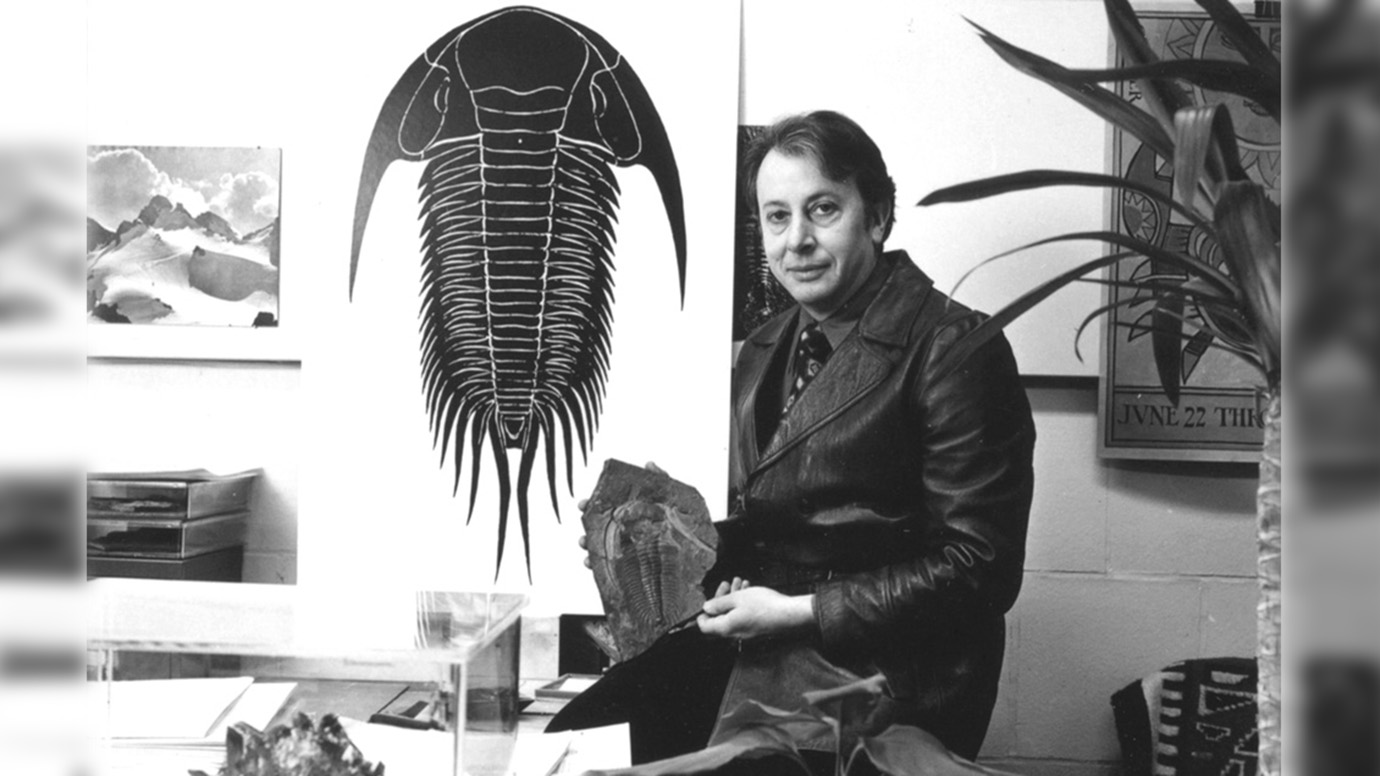This might take a spell. Going to try and tell a tale of a certain family of trilobites and a different world hundreds of millions of years ago.
Once upon a time, and for a long time, there existed an arc of volcanic islands in an earlier Atlantic. This island arc has been given the name Avalonia, named for the Avalon Peninsula on Newfoundland. Let's look at the chart below, in French, and depicting the parts of our present day world that were once part of ancient Avalonia:

In English:
BE= Belgium. GB/UK= Great Britain
CA= Canada. IE= Ireland
DE= Denmark. NL= Netherlands
FR= France. PL= Poland
US= US
Other areas that were once part of this arc of volcanic islands include portions of both North and South Carolina, the Bohemia region of the Czech Republic, Spain, and Morocco in North Africa. Here's a map showing, in yellow, areas that were at one time part of ancient Avalonia:


More information on the Avalonian formations of lower Narragansett Bay, RI can be found here:
"The world was very different then. The arc formed offshore of present day Morocco (northwest Africa) and Venezuela (northern South America) when Africa and South America were joined in a larger continent called Gondwana. At that time, the part of Africa that is now the Sahara Desert was located at the south pole!
Rhode Island's nearest neighbor (across-the-sea, as opposed to other parts of the Avalonian volcanic arc) was located to the south, closer to Gondwana, in a triangular bit of ocean. It was an island - now it is the state of Florida. To the west, along the Avalonian arc, were parts of what is now the eastern United States southward to the Carolinas. To the east, along the arc, were parts of present-day Massachusetts, Maine, Nova Scotia, New Brunswick, Newfoundland, Morocco, southern Ireland, southern England, Wales, Portugal, western Spain, northwest France, Belgium, Holland and northern Germany. There was no life on the land. Living things were found only in the sea, and they were just beginning to evolve from single-cell organisms into some of the earliest soft-bodied, multi-cellular organisms."
The link above delves into the fact that around the shallow waters of ancient Avalonia lived a particular family of trilobites: the Paradoxidoidea family. And, since this family of trilobite ONLY lived around Avalonia, wherever one finds fossils of that trilobite family, that is proof that the formation where found was once a part of Avalonia. So, look at the schematic map of Avalonia at the start of this thread, and the list of lands in the preceding paragraph here, and you can see how, widely separated portions of today's world, were once together as a chain of islands in the Southern Hemisphere of an earlier Atlantic Ocean.
And so here are a few trilobites found in the rocks of Avalonia, and now scattered about the Earth. All members of the same family of trilobites, all restricted to the shallow seas of Avalonia.
Paradoxides davidis, Middle Cambrian, Newfoundland. 7" in length:

Paradoxides pradoanus, Spain.

From the Czech Republic, two specimens of Paradoxides gracilis:



Once upon a time, and for a long time, there existed an arc of volcanic islands in an earlier Atlantic. This island arc has been given the name Avalonia, named for the Avalon Peninsula on Newfoundland. Let's look at the chart below, in French, and depicting the parts of our present day world that were once part of ancient Avalonia:

In English:
BE= Belgium. GB/UK= Great Britain
CA= Canada. IE= Ireland
DE= Denmark. NL= Netherlands
FR= France. PL= Poland
US= US
Other areas that were once part of this arc of volcanic islands include portions of both North and South Carolina, the Bohemia region of the Czech Republic, Spain, and Morocco in North Africa. Here's a map showing, in yellow, areas that were at one time part of ancient Avalonia:


More information on the Avalonian formations of lower Narragansett Bay, RI can be found here:
"The world was very different then. The arc formed offshore of present day Morocco (northwest Africa) and Venezuela (northern South America) when Africa and South America were joined in a larger continent called Gondwana. At that time, the part of Africa that is now the Sahara Desert was located at the south pole!
Rhode Island's nearest neighbor (across-the-sea, as opposed to other parts of the Avalonian volcanic arc) was located to the south, closer to Gondwana, in a triangular bit of ocean. It was an island - now it is the state of Florida. To the west, along the Avalonian arc, were parts of what is now the eastern United States southward to the Carolinas. To the east, along the arc, were parts of present-day Massachusetts, Maine, Nova Scotia, New Brunswick, Newfoundland, Morocco, southern Ireland, southern England, Wales, Portugal, western Spain, northwest France, Belgium, Holland and northern Germany. There was no life on the land. Living things were found only in the sea, and they were just beginning to evolve from single-cell organisms into some of the earliest soft-bodied, multi-cellular organisms."
The link above delves into the fact that around the shallow waters of ancient Avalonia lived a particular family of trilobites: the Paradoxidoidea family. And, since this family of trilobite ONLY lived around Avalonia, wherever one finds fossils of that trilobite family, that is proof that the formation where found was once a part of Avalonia. So, look at the schematic map of Avalonia at the start of this thread, and the list of lands in the preceding paragraph here, and you can see how, widely separated portions of today's world, were once together as a chain of islands in the Southern Hemisphere of an earlier Atlantic Ocean.
And so here are a few trilobites found in the rocks of Avalonia, and now scattered about the Earth. All members of the same family of trilobites, all restricted to the shallow seas of Avalonia.
Paradoxides davidis, Middle Cambrian, Newfoundland. 7" in length:

Paradoxides pradoanus, Spain.

From the Czech Republic, two specimens of Paradoxides gracilis:










 it is the genus that got me into trilobites as a child. Fascinating that where I live was once a volcanic island south of the equator
it is the genus that got me into trilobites as a child. Fascinating that where I live was once a volcanic island south of the equator  hmy:
hmy:









Comment